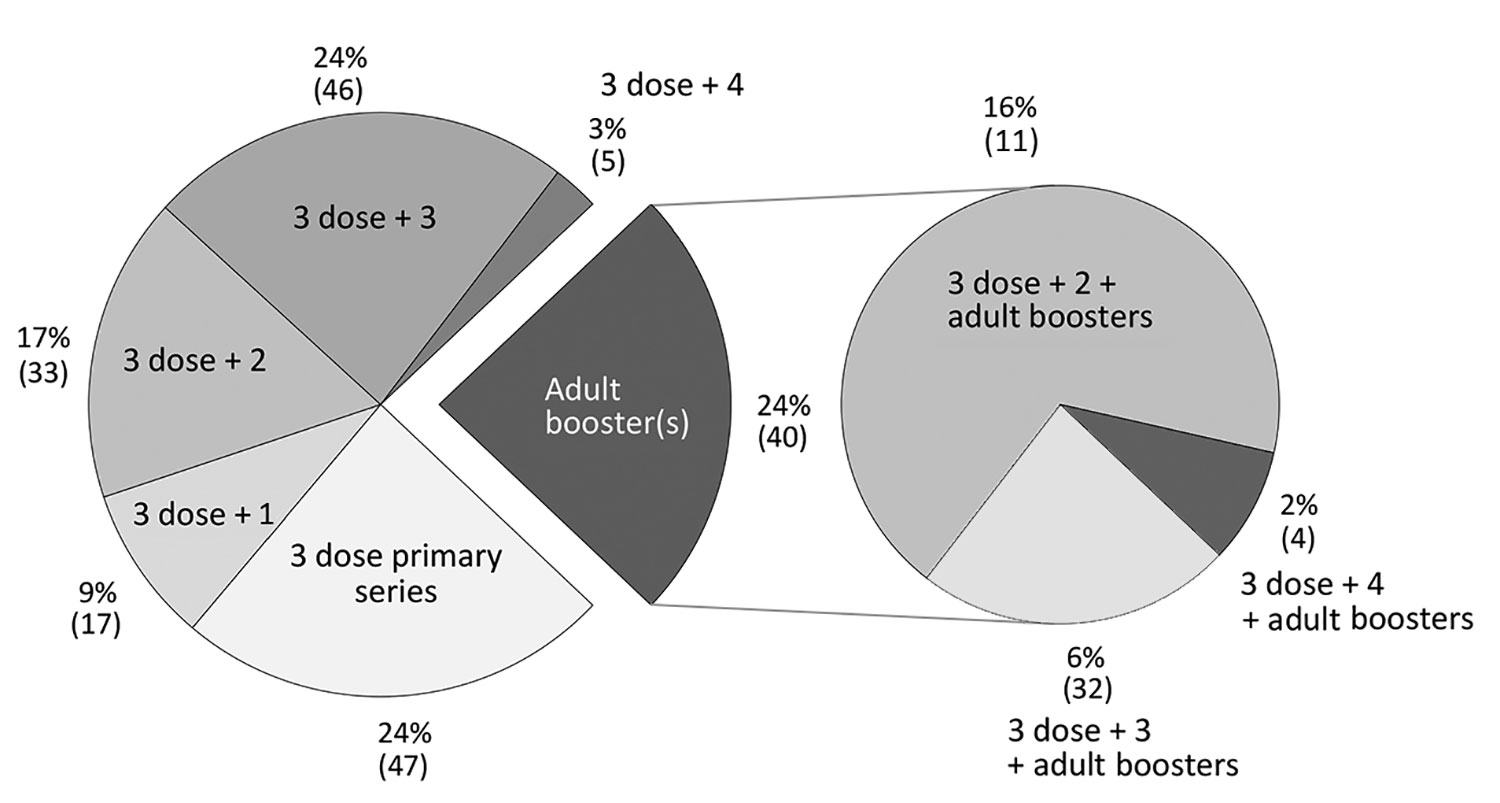Volume 25, Number 10—October 2019
Synopsis
Global Epidemiology of Diphtheria, 2000–20171
Figure 2

Figure 2. Percentage (number) of countries reporting each diphtheria vaccination schedule, 2018. The number after the plus sign indicates the number of booster doses on the national schedule after the 3-dose primary series and before the age of 18 years.
1Preliminary results from this study were presented at the meeting of the Strategic Advisory Group of Experts on Immunization, Geneva, Switzerland, April 25–27, 2017.
2Retired.
Page created: September 17, 2019
Page updated: September 17, 2019
Page reviewed: September 17, 2019
The conclusions, findings, and opinions expressed by authors contributing to this journal do not necessarily reflect the official position of the U.S. Department of Health and Human Services, the Public Health Service, the Centers for Disease Control and Prevention, or the authors' affiliated institutions. Use of trade names is for identification only and does not imply endorsement by any of the groups named above.